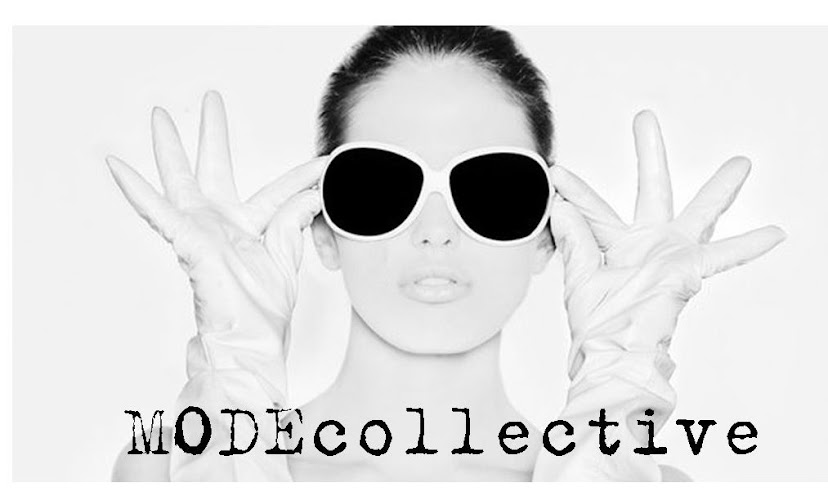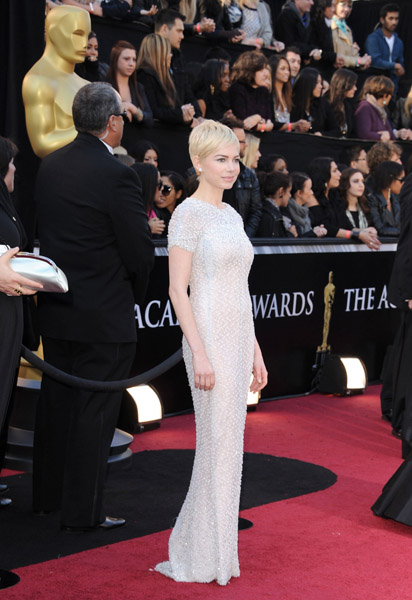London Fashion Week Ends
Watch the highlights from London Fashion Week TV below or on their website at
Day 1 Highlights-London Fashion Week
Day 2 Highlights-London Fashion Week
Day 3 Highlights-London Fashion Week
Day 4 Highlights -London Fashion Week
Day 5 Highlights-London Fashion Week
Day 6 Highlights-London Fashion Week
Milan Fashion Week Begins
Outside of Paris Fashion Week, Milan Fashion Week showcases some of the industry’s most globally well-known designers such as Versace, Armani, Gucci, Dolce & Gabanna, Bottega Veneta, Missoni, Ferragamo and Prada but the list goes on and on.
In addition to this spectacular week in fashion Gucci also celebrates 90 years in the business. There is so much yet to come from Gucci including a possible cosmetics and beauty line with P&G as Proctor & Gamble try to expand their luxury portfolio. However, the history of Gucci is rich, like so many other Italian design houses. Guccio Gucci, the founder of Gucci opened his first stores in Florence in 1921 during the same time as the height of couture in Paris. From 1935 to 1936 Gucci had to find alternatives to imported leather and other materials as a result of the embargo against Italy. During this time of embargo Gucci developed woven materials such as hemp from Naples which was printed with the first signature print—a series of small, interconnecting diamonds in dark brown on a tan background. The production of leather goods resumed after WWII in 1947 to 1948. During this time Gucci introduced pigskin as a leather option for his product in addition to creating his first bamboo handled bag which were inspired by the shape of a saddle. Gucci also became an Italian pioneer in the US in 1953. Gucci’s rich history continues and its ready to wear soared to a great heights in the 90’s with Tom Ford’s sensual collections.
To read more about Gucci’s history visit. http://www.gucci.com/us/worldofgucci/mosaic/gucci_forever
To read more about Gucci’s history visit. http://www.gucci.com/us/worldofgucci/mosaic/gucci_forever
Giorgio Armani Fall 2011 Show
Prada Fall 2011 Show
Dolce & Gabbana Fall 2011 Show
Missoni Fall 2011 Show
Emilio Pucci Fall 2011 Show
Versace Fall 2011 Show
Jil Sander Fall 2011 Show
Bottega Veneta Fall 2011 Show
Roberto Cavalli Fall 2011 Show
Fendi Fall 2011 Show
Marni Fall 2011 Show
To see all of the exits from each show visit STYLE.COM http://www.style.com/fashionshows/collections/F2011RTW/
Venture Capitalists Re-Emerge to Invest in Fashion
Fashion and Wall Street and Investors have had a love hate relationship through the years as a result of the tumultuous ups and downs and volatility that sometimes comes with fashion and retail. This bumpy relationship really began in the 90s when many fashion houses were going public. Back then a fashion brand could be started with little capital but today the cost for a fashion startup is generally in the millions. So how does a designer or retailer get the startup capital needed to begin their business?
One way has been angel investors or venture capitalists. In 2000 investments from venture capitalists investing in fashion hit a high of $100 billion but quickly declined during the last few years as a result of the economic crash and recession the world experienced and continues to experience. But there is more hope today as it is estimated that venture capitalists invested roughly $25 billion last year. So this gives fashion entrepreneurs hope. But what types of businesses are appealing to these investors? The most appealing appear to be those companies that merge retail with an online component.
New Efforts to Prepare NYC’s Garment Center for the Future
Mayor Bloomberg and the city of New York with the help of fashion’s heavy hitters have invested in a multiple point plan to re-invigorate the fashion industry in NYC. The plan aims to create and maintain a sold framework for the future of the industry. The plan is briefly outlined in the below link.
In addition to this plan there is an idea to have a garment center. The garment center is the brainchild of Andrew Rosen, a fashion veteran from New York and the CEO and President of Theory who has also invested in new designers such as Rag & Bone and Alice + Olivia. His goal is to put his ideology into practice by helping to develop and support unproven designers. Obviously, this is a shared ideology and one that MODEcollective is happy to applaud.
The goal of the garment center is to create a place that supports designers from concept to production by providing all of the tools necessary in a facility. This plan also would help keep some manufacturing local and made in the USA by utilizing many great factories within the US whether they be located down the eastern seaboard or out west in California.
Highlights of the plan:
- · Use American factories.
- · Create a bond with Apple and other technologies that could help lead the advancement in production, marketing and merchandising that would help make the US more competitive with Asia.
- · Develop more technically advanced fabrics
- · Give designers and young people experience working for someone else.
- · Create a better link between Wall Street and the fashion industry through the financing of small companies.
- · A mentorship program that would set up a network of apparel executives who will mentor the next generation and provide advice*** (This is incredibly important as experiences and knowledge should not be held secret, but should be shared)
Alexander Wang’s Flagship Debut
 After six years being a highly celebrated new designer, Alexander Wang opens his flagship shop in New York on Grand Street in the former Yohji Yamamoto boutique. Wang uses his sense of contrasts in the creation of his store and uses words like “interrupted” to describe its interior design. This new store will serve as a “laboratory” to push the envelope and test new ideas that other retailers carrying his collection cannot afford to do.
After six years being a highly celebrated new designer, Alexander Wang opens his flagship shop in New York on Grand Street in the former Yohji Yamamoto boutique. Wang uses his sense of contrasts in the creation of his store and uses words like “interrupted” to describe its interior design. This new store will serve as a “laboratory” to push the envelope and test new ideas that other retailers carrying his collection cannot afford to do.Alexander Wang’s operation is also a family affair with relatives in many of his company’s executive positions including his mother, Ying Wang, who owns a manufacturing firm in china and with the expansion into Asia, she will be a valuable asset. Other new hires include CFO Gabriel Saca and COO Mark Greene both formerly of Coach. Alexander Wang’s brother and sister will continue as the chief production officer and CEO.
To Read More and See More Photos Visit:
To Read More and See More Photos Visit:
http://fashioncopious.typepad.com/fashioncopious/2011/02/1st-look-inside-alexander-wangs-debut-flagship-store.html
New Addition to the Bridal Market: Shopbop’s Wedding Boutique
We wrote about bridal concepts opening as part of what to watch in 2011. We have already seen a new bridal venture from Urban Outfitters called BHLDN. Now Shopbop will begin their own bridal business with a new wedding boutique.
The focus of this new boutique is to feature premier designers through exclusive styles. Although the site has not launched yet you can sign up to receive a notification when the site does go live.
FOOD FOR THOUGHT: Oscars and the Fashions of the Award Season
Fashion and Hollywood have always been fascinated by one another. Through the years designers have designed costumes for the big screen. From Chanel designing for Hollywood films to today’s designers like Giorgio Armani, who has over 300 movie credits, to Rodarte, who most recently designed for “Black Swan,” the designer presence in Hollywood is tremendous and has only become so prominent, especially for the award season, in the past 30 years.
Certainly Hollywood glamour and fashion design are synonymous but the prominence and fashion show that the awards show now are did not exist over 30 years ago. Designers were not clamoring to get their latest creations on Hollywood stars and starlets like they are today. However, 30 years ago there was one designer who saw the potential. Thirty years ago actors were left to their own devices, often times dressing so poorly on their own accord that they would be ridiculed. It took one designer to tap into the Hollywood scene, one designer who is a star himself to help to establish the fashion and Hollywood connection that it is today…Giorgio Armani. He took stars and made them a better version of themselves in simple, sensual and glamorous gowns and tuxedos. Once the press started commenting on how good everyone looked other designers began to seek out celebrities, making the award season an extension of the fashion weeks from around the world. We now have a pre-show dedicated to the red carpet fashions with bloggers posting their favorites even as the pre-show is broadcasting. But do we stop to think about how this all came about? Not usually. For many Millenials this is how the award season has always been. And the fashions worn to the Oscars have become a main focus and highlight for the event itself.
The red carpet at the Oscars has also dictated what designers and actors should be wearing so as not to end up on the worst dressed lists. An argument for those who believe fashion is ending say that as a result of the strong criticism celebrities can face on the red carpet, designers have pared down their gowns and designs, continuing to democratize fashion in an effort to appeal to celebrities and to the critical audience.
Regardless, the Oscars serve as a great platform to showcase fashion whether it be historic designers like Givenchy and Armani or newer designers like Rodarte and the popularity of the red carpet preshow only supports how strongly the public feels about fashion and how much it can emotionally move and inspire them.














If your job was to forecast trends for a fashion company, what domestic cities (excluding New York City) would you travel to for inspiration and what would you hope to accomplish there? What one international city would you also travel to?
ReplyDelete